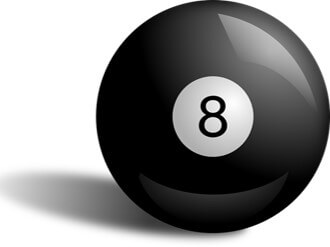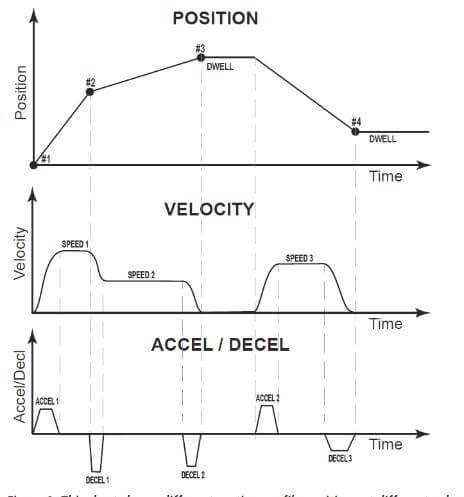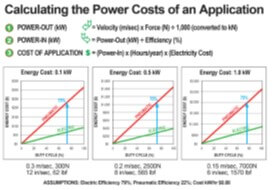Electric linear motion vs. pneumatic. 8 things every designer should know about selection
By Ryan Klemetson on February 25, 2020
 There’s a debate in the machine design community. A debate about what’s the best linear motion technology—electric or pneumatic. There are proponents on both sides. As a manufacturer of both electric and pneumatic linear actuators, we’d like to bring some balance to the discussion.
There’s a debate in the machine design community. A debate about what’s the best linear motion technology—electric or pneumatic. There are proponents on both sides. As a manufacturer of both electric and pneumatic linear actuators, we’d like to bring some balance to the discussion.
Electric linear motion has benefits as do pneumatic solutions. This blog will give you eight factors to consider when you’re making this important selection. For a thorough review of the subject, see our new white paper, A technical comparison: Performance of pneumatic cylinders and electric rod actuators.
Here are the eight key factors involved in linear actuator selection and how pneumatic and electric linear motion systems measure up.
1. Control of motion parameters
Some linear motion applications are uncomplicated—simply moving from point A to point B. Others require multiple positions, dwell times and speeds. Complex motion solutions are becoming more common as industrial automation requires more  precision and control.
precision and control.
Pneumatic cylinders are an affordable, easy-to-implement solution for simple end-to-end position applications. However, a motion profile with multiple stops (like the one shown here) may require additional hardware, making installation and operation more time-consuming and complex.
Electric linear motion systems using servo drives and motors offer precise control of position, speed and acceleration/deceleration. System level control is accomplished through interfacing the drive with a PLC, HMI or other controller. With this type of system configuration, motion profiles like the one shown here are no problem.
Since electric systems rely on current and voltage to control the motor, rather than compressed air, control of position and speed, as well as accuracy and repeatability are much better. Add to this the ability to command multiple mid-stroke positions and the reasons why more machine designers are specifying electric linear motion systems become clearer.
2. Force capabilities
When you’re analyzing the force requirements of an application, be sure to look at peak force and continuous force. Also, consider if you need the force available on demand or if your application will accommodate a delay in force generation.
Pneumatic cylinders operate on the Force = Area x Pressure fluid power principle, which allows forces to be easily calculated (typical operating pressures are 80-100 psi or 5.5-7.0 Bar). Because air is a very compressible media, some systems will have a delay in force generation since the system takes time to build pressure.
With an electric system, force is generated by motor torque which is controlled by current to the motor. Full force is available almost immediately, and the motors are coupled to very rigid mechanical systems. The added benefit is that these motion systems will be more dynamically rigid and responsive.
3. Velocity, acceleration, and deceleration
Pneumatic systems can reach high speeds in basic end-to-end applications where adequate compressed air volume and pressure are available. However, speed control is difficult. Acceleration and deceleration are difficult to control so a machine designer often must use shock absorbers in high speed or heavy load applications.
Electric systems can control speed precisely. Acceleration and deceleration are easily controlled giving the designer the ability to blend speeds throughout a motion profile and decelerate to a complete stop without shocks.
4. System complexity and footprint
 Space is at a premium in most factories. Machines need to be compact, and supporting equipment that takes up floor space may be questioned.
Space is at a premium in most factories. Machines need to be compact, and supporting equipment that takes up floor space may be questioned.
While a pneumatic cylinder offers a compact package at the work point, the compressed air system that drives it can take up a large amount of factory floor space.
An electric linear actuator will commonly be longer or wider than an air cylinder but will have fewer components overall. The actuator will be connected to a servo drive which can be mounted in the machine’s control cabinet.
It’s not enough that an actuator do the work; designers also want to know that the device will last and not require costly, time-consuming maintenance.
Fluid-powered cylinders can deliver rugged, long-lasting performance when properly maintained. Overall performance is a combination of seal and air quality along with initial installation and set-up. Even in an ideal installation, seals wear and leak with time requiring continual maintenance and adjustments. All of this takes time away from productivity, not to mention that variations in pressure wreak havoc on repeatability and process control.
Electric actuators can be sized for the service life requirements of the machine. Very little to no maintenance is required.
6. Data collection
Modern manufacturing facilities demand performance data from production equipment. Analysis of the data allows for process improvement.
For pneumatic systems to accomplish this, they need expensive linear transducers and additional sensors to provide positioning feedback. Cylinders often have proximity sensors but the information they gather may not be adequate.
Electric servo actuator systems often have data collection built in. Servo drives can track performance characteristic of the motor. Current to the motor can be used to track torque which can be used to determine force. The feedback device on the motor registers position, velocity and acceleration/deceleration.
7. Efficiency and electricity costs
 How much to spend on any component is a critically important decision. However, many companies now look beyond purchase price to consider operating costs, like maintenance and electricity to evaluate the total cost of ownership.
How much to spend on any component is a critically important decision. However, many companies now look beyond purchase price to consider operating costs, like maintenance and electricity to evaluate the total cost of ownership.
Air-powered cylinders and their supporting compressed air systems operate at only 10 to 20 percent efficiency. Plus, a lot of expensive compressed air is lost through leaks. These leaks may be due to small holes in transport lines, worn seals, or poorly fitted connections.
Electric actuator systems typically operate at 70 to 80 percent efficiency and only use power when doing work. (A pneumatic system requires that the compressor run constantly to maintain pressure in the cylinders.)
8. Shock and side loads
In applications where there is outside or application-induced shock and/or vibration, the compressible nature of the air in a cylinder acts as a natural cushion that helps the cylinder withstand shocks.
Electric actuators with their screw assemblies and bearing systems are more sensitive to shock loads. Depending on the service life required in an application, an electric actuator may have to be oversized in order to withstand shock loads.
In situations where rod cylinders (air or electric) experience side loads, neither will perform well. A side load will cause premature wear on an air cylinder’s seals. In an electric actuator, side loading puts stress on the screw/nut assembly. This loading condition will also prematurely wear the rod seal and may allow contaminants into the body of the actuator causing more wear and failure.
In summary
There are many factors to consider when selecting a linear motion system. The eight listed here are critical when a designer needs to choose between pneumatic and electric linear motion.
Each application will be unique. If you have questions or need engineering input from linear motion experts, contact us.
Don’t forget this resource
For a full explanation of these factors, please download our new white paper, A technical comparison: Performance of pneumatic cylinders and electric rod actuators.

 Ask an Engineer
Ask an Engineer